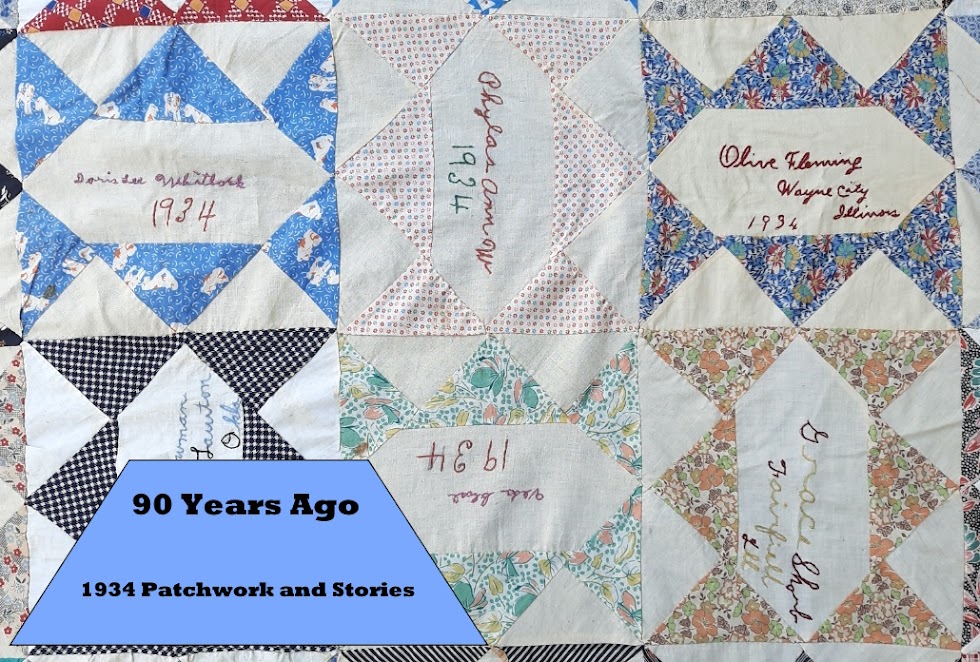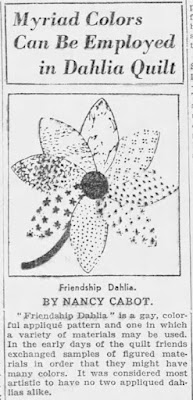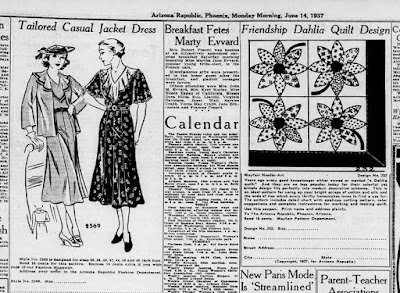The Friendship Dahlia appears to be a most popular quilt block in the 1930s. It is an applique pattern with eight overlapping petals, a stem which was curved or straight, and a center circle to cover the petal points. It was a "friendship" block because to get the variety of prints desired the quiltmaker needed to swap materials with her friends. The block was also made without the variety as shown below (the overlapping petals were a bit challenging for Alma Hampton.)
The Friendship Dahlia design was an Aunt Martha favorite, pattern number C397.
The instructions state to "crease to find the center and place eight petals around it." If you look carefully at the first block pictured you can see the diagonal creases in the top corners. Friendship Dahlia was printed in Aunt Martha's Favorites No. 3230. The Aunt Martha patterns were also available by mail and were advertised in the newspapers.
One may search a long time before finding a more beautiful design than this Friendship Dahlia. The petals are made from with different prints, with a yellow center and a green stem - all to be appliqued on a white block. The thirty blocks may all be the same flower, or by using small pieces of leftover materials the flowers may be variegated. Cutting pattern and instructions, C397, 15c. Order by mail only. Allow a week to ten days for delivery.
December 17, 1932 The Chattanooga News Chattanooga, Tennessee
Nancy Cabot published the Friendship Dahlia in the following year, and again the year after.
A very modern design is the "Friendship Dahlia" - not nearly so old as the venerable "Friendship Ring," for which it was designed as a companion. The different prints which formed the sections of the ring were originally furnished by various friends. Prints of gay little chintz pieces will make a pretty dahlia.
May 28, 1933 Chicago Tribune Chicago, Illinois
Friendship
Dahlia is a gay, colorful applique pattern and one in which a variety
of materials may be used. In the early days of the quilt friends
exchanged samples of figured materials in order that they might have
many colors. It was considered most artistic to have no two appliqued dahlias alike.
December 19, 1934 Chicago Tribune Chicago, Illinois
Another pattern in another newspaper.








What a great way to use my '30's reprints!
ReplyDeletenice designs !
ReplyDelete